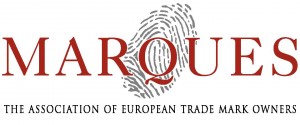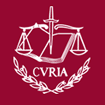 In February this year the European trademark community took note of a leaked version of the European Commissions’s draft trademark legislation in reaction to the widely discussed Study on the Overall Functioning of the European Trademark System presented by the Max Planck Institute for Intellectual Property in February 2011 (pdf, 4.5 MB).
In February this year the European trademark community took note of a leaked version of the European Commissions’s draft trademark legislation in reaction to the widely discussed Study on the Overall Functioning of the European Trademark System presented by the Max Planck Institute for Intellectual Property in February 2011 (pdf, 4.5 MB).
The so called ‘leaked proposal’, which immediately received a considerable press coverage (see e.g. WTR or MIP), basically consists of two draft regulations and one draft directive:
- draft amended Council Regulation No 207/2009 on the
CommuniyEuropean Trade Mark, - draft amended Regulation (EC) No 2868/95 on the fees payable to the OHIM,
- proposal for a Directive to approximate the laws of the Member States relating to trademarks (Recast).
The leaked proposal is a pre-final text which gives extensive insight into the EU Commission’s plans to substantively refurbish the Community Trademark (CTM) system as we know it today.
The reasons why and by whom the legislative proposal was ‘leaked’ instead of being officially published on the EU servers lie in the dark, but it can be assumed that the political intentions outweigh the legal ones. As the drafts have been sent, inter alia, to the member organisations of the so called OAMI Users’ Group, a consortium of international NGO’s active in the IP sector and accredited to the OHIM, the leaker apparently intends to provoke a reaction of stakeholders, for instance to test the acceptance of the new legislation in a more conspirative way instead of risking open and public criticism.
The MARQUES association considers itself as a defender of trademark owner’s and system user’s interests. Compared to other member organisations of the OAMI Users’ Group, MARQUES appears to be more interested in a public discussion as it now again involved the public in a discussion that many other stakeholders consider a topic for closed expert circles only. The extensive comments (pdf, also here) published yesterday (20 March 2013) also include a detailled summary of the substance of the draft legislation.
By this open approach MARQUES refuses to become a silent accomplice of the leaker and his political interests and, even more important, reminds lawmakers that openness and public consultation are vital to a democratic community and the acceptance of its laws.
Yesterday evening, MARQUES, an association of worldwide brand owners that is an accredited organisation before the OHIM (cf. OAMI Users’ Group) and observer at the OHIM Administrative Board, has made a noteworthy move as it offered its interpretation of the conclusions to be drawn from the final judgement of the CJEU in case C-307/10 IP TRANSLATOR (see earlier report) in an open letter sent to the national IP offices of all EU member states, the Benelux IP office, and the Office for Harmonisation in the Internal Market itself. The letter is undersigned by Nunzia Varricchio, Chair of MARQUES Council, and my partner Jochen Höhfeld, Chair of MARQUES Trade Mark Law and Practice Team.
As already summarised here, the trademark application ‘IP TRANSLATOR‘ was launched as a test case by the Institute of British Patent Attorneys (CIPA) to obtain a review of OHIM‘s practise as to the meaning of class headings by the CJEU. The national UK trademark ‘IP TRANSLATOR’ was claimed for ‘Education; providing of training; entertainment; sporting and cultural activities’, i.e. the class heading of Class 41 of the Nice Classification. The UK IPO refused the application on the basis of Article 3(1)(b) and (c) of Directive 2008/95 and OHIM Communication No 4/03, according to which the trademark covers all services falling within Class 41, so that the trademark was considered lacking distinctive character and being descriptive in nature for “translation services”, which also falls within Class 41. The subsequent appeal to the referring court raised that the application did not specify, and therefore did not cover, translation services. The issued decision appears quite clear on this problem, as it clarifies
- that the goods and services must be identified with sufficient clarity and precision to enable third parties, on that basis alone, to determine the extent of protection;
- that the general indications of the class headings may be used provided they are sufficiently clear and precise; and
- that, if (all general indications of) a class heading is used, this will not be considered to cover the entire class if this is not considered sufficiently clear and precise (no. 62). In this case, the applicant would have to specify the goods and services further.
Thus, the CJEU clearly voted for the means-what-it says approach.
 Just today the Court of Justice of the European Union (CJEU) have published their final judgement in case C-307/10 IP Translator. The main findings are (emphasis addeed):
Just today the Court of Justice of the European Union (CJEU) have published their final judgement in case C-307/10 IP Translator. The main findings are (emphasis addeed):
Directive 2008/95/EC of the European Parliament and of the Council of 22 October 2008 to approximate the laws of the Member States relating to trade marks must be interpreted as meaning that it requires the goods and services for which the protection of the trade mark is sought to be identified by the applicant with sufficient clarity and precision to enable the competent authorities and economic operators, on that basis alone, to determine the extent of the protection conferred by the trade mark.
Directive 2008/95 must be interpreted as meaning that it does not preclude the use of the general indications of the class headings of the Classification referred to in Article 1 of the Nice Agreement Concerning the International Classification of Goods and Services for the Purposes of the Registration of Marks, concluded at the Nice Diplomatic Conference on 15 June 1957, last revised in Geneva on 13 May 1977 and amended on 28 September 1979, to identify the goods and services for which the protection of the trade mark is sought, provided that such identification is sufficiently clear and precise.
An applicant for a national trade mark who uses all the general indications of a particular class heading of the Classification referred to in Article 1 of the Nice Agreement to identify the goods or services for which the protection of the trade mark is sought must specify whether its application for registration is intended to cover all the goods or services included in the alphabetical list of that class or only some of those goods or services. If the application concerns only some of those goods or services, the applicant is required to specify which of the goods or services in that class are intended to be covered.
Continue reading »
Today, in the Court of Justice of the European Union the Opinion of Advocate General BOT concerning Case C‑307/10 has been delivered (Chartered Institute of Patent Attorneys v Registrar of Trade Marks (Reference for a preliminary ruling brought by the Person Appointed by the Lord Chancellor under Section 76 of the UK Trade Marks Act 1994, on Appeal from the UK Registrar of Trade Marks, submitted by the High Court of Justice of England and Wales (United Kingdom)).
What is the matter?
Continue reading »
 Today, the Court of Justice of the European Union (CJEU) has published the final decision in Case C‑324/09 (L’Oréal SA et al. vs. eBay International AG et al.).
Today, the Court of Justice of the European Union (CJEU) has published the final decision in Case C‑324/09 (L’Oréal SA et al. vs. eBay International AG et al.).
From the Court decision we learn that L’Oréal is a manufacturer and supplier of perfumes, cosmetics and hair-care products. In the United Kingdom it is the proprietor of a number of national trade marks. It is also the proprietor of Community trade marks. L’Oréal operates a closed selective distribution network, in which authorised distributors are restrained from supplying products to other distributors.
Furthermore, eBay operates an electronic marketplace on which are displayed listings of goods offered for sale by persons who have registered for that purpose with eBay and have created a seller’s account with it. eBay charges a percentage fee on completed transactions. eBay enables prospective buyers to bid for items offered by sellers. It also allows items to be sold without an auction, and thus for a fixed price, by means of a system known as ‘Buy It Now’. Sellers can also set up online shops on eBay sites. An online shop lists all the items offered for sale by one seller at a given time. Sellers and buyers must accept eBay’s online-market user agreement. One of the terms of that agreement is a prohibition on selling counterfeit items and on infringing trade marks. In some cases eBay assists sellers in order to enhance their offers for sale, to set up online shops, to promote and increase their sales. It also advertises some of the products sold on its marketplace using search engine operators such as Google to trigger the display of advertisements.
According to the factual section of the Court decision, starting point was that on 22 May 2007, L’Oréal sent eBay a letter expressing its concerns about the widespread incidence of transactions infringing its intellectual property rights on eBay’s European websites. L’Oréal was not satisfied with the response it received and brought actions against eBay in various Member States, including an action before the High Court of Justice (England & Wales), Chancery Division.
L’Oréal’s action before the High Court of Justice sought a ruling, first, that eBay and the individual defendants are liable for sales of 17 items made by those individuals through the website www.ebay.co.uk, L’Oréal claiming that those sales infringed the rights conferred on it by, inter alia, the figurative Community trade mark including the words ‘Amor Amor’ and the national word mark ‘Lancôme’. The Court decision confirmed that it was common ground between L’Oréal and eBay that two of those 17 items are counterfeits of goods bearing L’Oréal trade marks.
The Court (Grand Chamber) today ruled:
Continue reading »
The k/s/n/h::law blog
Some of the patent attorneys of the KSNH law firm have joined their efforts to research what is going on in the various branches of IP law and practice in order to keep themselves, their clients as well as interested circles of the public up to date. This blog is intended to present results of such efforts to a wider public.
Blog Archives
- November 2013 (2)
- October 2013 (1)
- September 2013 (1)
- August 2013 (2)
- July 2013 (3)
- June 2013 (5)
- March 2013 (5)
- February 2013 (4)
- January 2013 (5)
- December 2012 (5)
- November 2012 (5)
- July 2012 (5)
- June 2012 (8)
- May 2012 (5)
- April 2012 (3)
- March 2012 (4)
- February 2012 (5)
- January 2012 (6)
- December 2011 (12)
- November 2011 (9)
- October 2011 (9)
- September 2011 (4)
- August 2011 (7)
- July 2011 (4)
- June 2011 (1)
Blog Categories
- business methods (6)
- EPC (7)
- EPO (12)
- EU law (92)
- ACTA (8)
- CJEU (4)
- Comitology (1)
- competition law (2)
- Enforcement (6)
- EU Unified Patent Court (62)
- FTA India (1)
- TFEU (2)
- Trade Marks (5)
- European Patent Law (37)
- German Patent ACt (PatG) (1)
- German patent law (5)
- Germany (6)
- Pirate Party (3)
- International Patent Law (4)
- PCT (2)
- IP politics (10)
- licenses (2)
- Litigation (5)
- Patentability (7)
- Patents (12)
- Piratenpartei (2)
- Software inventions (10)
- Uncategorized (9)
- Unitary Patent (24)
- US Patent Law (4)
Comments
- kelle on Germany: Copyright Protection More Easily Available For Works Of “Applied Arts”
- Time Limits & Deadlines in Draft UPCA RoP: Counting The Days - KSNH Law - Intangible.Me on Wiki Edition of Agreement on Unified Patent Court Agreement (UPCA)
- Time Limits & Deadlines in Draft UPCA RoP: Counting The Days | ksnh::law on Wiki Edition of Agreement on Unified Patent Court Agreement (UPCA)
- Wiki Edition of Agreement on Unified Patent Cou... on Wiki Edition of Agreement on Unified Patent Court Agreement (UPCA)
- European Commission Takes Next Step Towards Legalising Software Patents in Europe | Techrights on EU Commission publishes Proposal of amendend Brussels I Regulation for ensuring Enforcement of UPC Judgements
Blogroll
- 12:01 Tuesday
- America-Israel Patent Law
- Anticipate This!
- AwakenIP
- BlawgIT
- BLOG@IPJUR.COM
- BP/G Radio Intellectual Property Podcast
- Broken Symmetry
- Class 46
- Director's Forum: David Kappos' Public Blog
- Gray on Claims
- I/P UPDATES
- IAM Magazine Blog
- Intellectual Property Intelligence Blog
- IP Asset Maximizer Blog
- IP CloseUp
- IP Dragon
- IP Watch
- IP Watchdog
- IPBIZ
- ipeg
- IPKat
- ITC 337 Law Blog
- Just a Patent Examiner
- K's Law
- MISSION INTANGIBLE
- Patent Baristas
- Patent Circle
- Patent Docs
- Patently Rubbish
- PatentlyO
- Patents Post-Grant
- Reexamination Alert
- SPICY IP
- Tangible IP
- The 271 Patent Blog
- The Intangible Economy
- THE INVENT BLOG®
- Think IP Strategy
- Tufty the Cat
- Visae Patentes
The KSNH blogging landscape


This blog and the German-language sister blog k/s/n/h::jur link to the two popular and privately run blogs IPJur und VisaePatentes and continue their work and mission with a widened scope and under the aegis of our IP law firm.
ksnhlaw on Twitter
- No public Twitter messages.
 KSNH::JUR Feed (german)
KSNH::JUR Feed (german)- Ist Verschlüsselung passé? September 6, 2013Auf verschiedenen Feldern beruflicher Praxis ist dafür zu sorgen, dass Kommunikation vertraulich bleibt. Die trifft beispielsweise für Ärzte zu, aber auch für Anwälte, darunter auch Patentanwälte. Einer der zahlreichen Aspekte, die in diesem Zusammenhang eine Rolle spielen, ist die Technik, um die Vertraulichkeit beruflicher Kommunikation sicherzustellen. Wa […]
- EU-Einheitspatent: Demonstrativer Optimismus und Zahlenmystik allerorten – Naivität oder politische Beeinflussung? June 26, 2013Nach mehreren vergeblichen Anläufen zur Schaffung eines EU-weiten Patentsystems wurde 1973 als Kompromiss das Europäische Patentübereinkommen unterzeichnet, welches unabhängig von der seinerzeit noch EWG genannten Europäischen Union System zur zentralisierten Patenterteilung mit nachgeordnetem Einspruchsverfahren durch das Europäische Patentamt schuf. Wie wi […]
- Moderne Zeiten oder: DPMA und Patentgericht streiten über die elektronische Akte April 25, 2013Bekanntlich hat das Deutsche Patent- und Markenamt (DPMA) im Jahre 2013 mit der rein technischen Fertigstellung der Einrichtungen zur elektronischen Akteneinsicht einen wichtigen Meilenstein seines Überganges von der Papierakte zur “elektronischen Akte” erreicht. Im DPMA werden aber bereits seit dem 01. Juni 2011 Patente, Gebrauchsmuster, Topografien und erg […]
- Gutachten zu Forschung, Innovation und technologischer Leistungsfähigkeit Deutschlands 2013 March 11, 2013Unter dem Datum vom 28. Februar 2013 ist die Bundestags-Drucksache 17/12611 veröffentlicht worden Sie trägt den Titel Unterrichtung durch die Bundesregierung - Gutachten zu Forschung, Innovation und technologischer Leistungsfähigkeit Deutschlands 2013. Die Bundesregierung legt dem Deutschen Bundestag seit dem Jahr 2008 […]
- 3D-Printing: Zum Filesharing von 3D-Modelldaten February 25, 2013In meiner kleinen zuvor angekündigten Reihe über rechtliche Aspekte des 3D Printing komme ich heute auf die Frage zu sprechen, ob die Hersteller von Gerätschaften es hinnehmen müssen, wenn Ersatztreile davon – vom Brillengestell über Smartphone-Gehäuseteile bis hin zu Rastenmähermotor-Abdeckungen – gescannt und die daraus […]
- Ist Verschlüsselung passé? September 6, 2013






